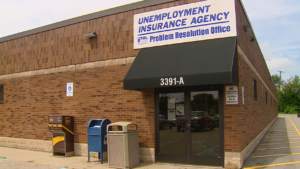The Biden administration has unveiled enhanced regulations aimed at eliminating lead paint dust hazards in homes and childcare facilities, potentially protecting over 300,000 children annually from this neurotoxin.
E.P.A. Enforces Stricter Standards to Combat Lead Paint Hazards

E.P.A. Enforces Stricter Standards to Combat Lead Paint Hazards
The new regulations obligate property owners to address any level of lead dust detected, safeguarding children from exposure.
In a significant move announced on Thursday, the Biden administration is tightening regulations concerning lead-based paint dust removal in residential and childcare settings. The newly implemented Environmental Protection Agency (E.P.A.) rules classify any detectable amount of lead dust within a building as a “lead hazard.” As a consequence, property owners will be responsible for cleanup expenses.
Lead exposure poses severe health risks, particularly to young children, as it can impair brain development and lead to long-term neurological issues. Despite a federal ban on residential lead-based paint dating back to 1978, approximately 31 million homes built before this cutoff are estimated to still harbor lead paint, with about 3.8 million of these residences containing children aged six and under.
"There is no safe level of lead exposure," asserted Michal I. Freedhoff, assistant administrator of the E.P.A.’s Office of Chemical Safety and Pollution. She highlighted the profound impact of lead poisoning, stating, "Lead exposure can rob children of their futures, changing the course of a life full of promise into one of permanent challenges and diminished potential."
As property and business owners prepare for the implications of these regulations, concerns about the potential financial responsibilities for cleanup efforts have arisen. Nonetheless, the E.P.A.’s stricter standards signal a commitment to prioritizing the health and safety of children in environments where lead exposure remains a considerable risk.
Lead exposure poses severe health risks, particularly to young children, as it can impair brain development and lead to long-term neurological issues. Despite a federal ban on residential lead-based paint dating back to 1978, approximately 31 million homes built before this cutoff are estimated to still harbor lead paint, with about 3.8 million of these residences containing children aged six and under.
"There is no safe level of lead exposure," asserted Michal I. Freedhoff, assistant administrator of the E.P.A.’s Office of Chemical Safety and Pollution. She highlighted the profound impact of lead poisoning, stating, "Lead exposure can rob children of their futures, changing the course of a life full of promise into one of permanent challenges and diminished potential."
As property and business owners prepare for the implications of these regulations, concerns about the potential financial responsibilities for cleanup efforts have arisen. Nonetheless, the E.P.A.’s stricter standards signal a commitment to prioritizing the health and safety of children in environments where lead exposure remains a considerable risk.























